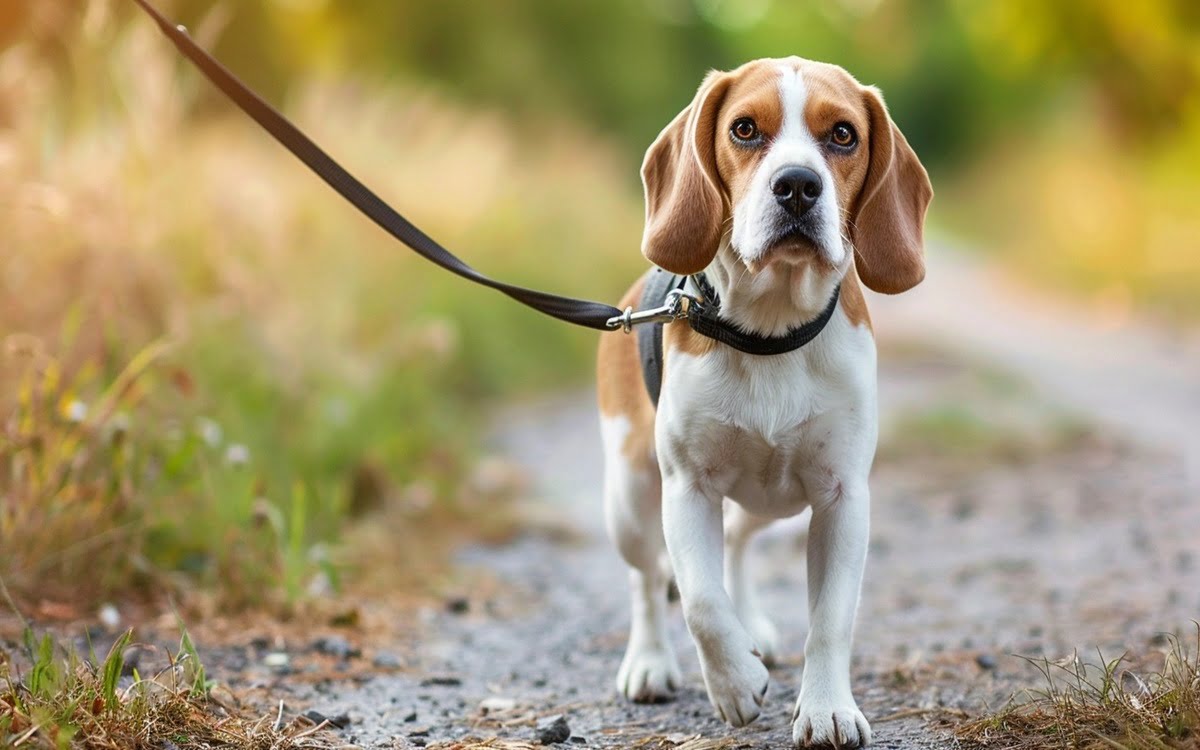Hey there, Beagle fans! If you’ve ever dreamed of sharing life with one of these charming, fun-loving hounds, you’re in for a treat. Beagles are absolute characters, full of personality, energy, and those irresistible puppy dog eyes. But – and this is a big but – they also come with their own set of training challenges. Think stubborn streaks, noses that lead them astray, and a chorus of baying that can test your patience.
But don’t worry, with a positive approach, some patience, and a whole lot of understanding for their Beagle-ness, you can absolutely train your furry friend to be the best doggo on the block. I’m a certified dog trainer absolutely smitten with these scent hounds, and I’m here to share everything you need for a successful training journey!
Understanding Your Beagle: The Key to Success
Breed History
Let’s rewind a bit. Beagles were originally bred as hunting dogs, and used to track rabbits and other small prey. Their incredible noses and boundless energy served them well in the field. But those instincts remain deeply ingrained, making training a Beagle a unique adventure!
Scent-Driven Nature
Get ready to follow your nose! A Beagle’s world revolves around smell. They see with their noses first, and everything else takes second place. This means they can easily get distracted by tantalizing scents during training sessions or walks.
Energy Levels
Beagles are like little Energizer bunnies! They need plenty of physical and mental exercise to prevent boredom from setting in. A bored Beagle can be destructive, finding their own entertainment by chewing furniture or serenading the neighborhood with their baying.
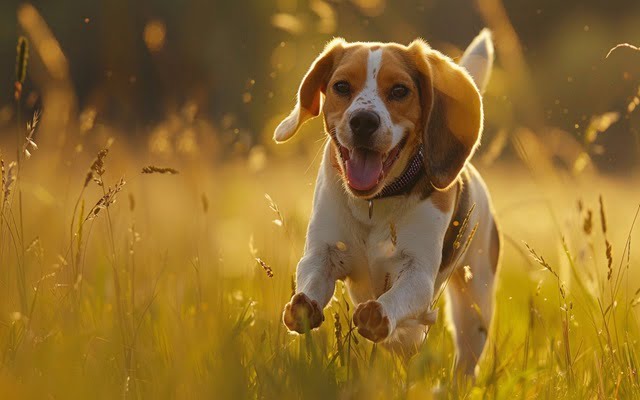
Intelligence & Stubbornness
Don’t be fooled by puppy-dog eyes! Beagles are smart cookies, but they also possess an independent streak. They might grasp the concept of “sit” but sometimes won’t feel particularly inclined to obey. Patience is your best weapon in these situations!
Communication
Learning your Beagle’s language is essential. Pay attention to their body language, barks, whines, and howls. Understanding these little signals will help prevent misunderstandings and strengthen your bond.
The Essential Foundations: Building a Strong Foundation
Potty Training
Housetraining a Beagle can test your patience, but don’t despair! Consistency and positive reinforcement are your allies. Here’s our game plan:
- The Schedule: Start with a predictable schedule for potty breaks, including after waking up, after meals, playtimes, and before bed. Young puppies will need to go out way more often!
- The Spot: Pick a designated potty spot in your yard and lead your Beagle there on a leash each time.
- Praise Party: When they do their business in the right place, throw a praise party! Treats, enthusiastic petting, and happy exclamations will make them want to repeat that behavior.
- Oops Moments: Accidents happen. Don’t scold, simply clean up quietly, and try to be more vigilant next time.
Beagle Potty Training Tips:
- Supervise, Supervise, Supervise: Especially in the early days, keep a close eye on your puppy indoors to catch any signs they need to go.
- Confinement:If supervision isn’t possible, confine your pup to a smaller area like a playpen or crate (we’ll talk about that more soon!) to reduce accidents.
Crate Training
A crate might seem like a jail cell, but for your Beagle, it can become their safe haven! Crates help with housetraining, prevent destructive behavior while you’re away, and offer a sense of security. Here’s how to make it a positive experience:
- Gradual Introduction: Start by placing treats and toys inside the crate with the door open. Let your Beagle explore at their own pace.
- Mealtime Magic: Feed in the crate with the door open, creating positive associations.
- Closing the Deal: Slowly increase the time with the door closed. Reward calm behavior with praise and treats. Never use the crate as punishment.
Socialization
A well-socialized Beagle is a happy Beagle! Expose your puppy to various sights, sounds, people, and other dogs in a safe, positive way from a young age. Here’s our plan:
- Puppy Classes:A fantastic way to socialize and get training guidance.
- Controlled Encounters:Introduce your pup to new people and dogs in a calm environment.
- Go Slow:Avoid overwhelming your pup. If they’re shy, keep encounters brief and upbeat.
- The Power of Treats:Associate new experiences with delicious rewards.
Teething
Those Beagle puppy teeth are sharp! Provide plenty of safe chew toys to redirect their chewing instincts. Consider:
- Appropriate Chews:Choose toys designed for their size and chewing strength. Look for durable rubber toys or natural chews.
- Swap It Out:If your pup chews on something inappropriate, gently remove it and offer an appropriate chew instead.
- Freezing Power:Frozen chew toys or ice cubes can soothe sore gums.
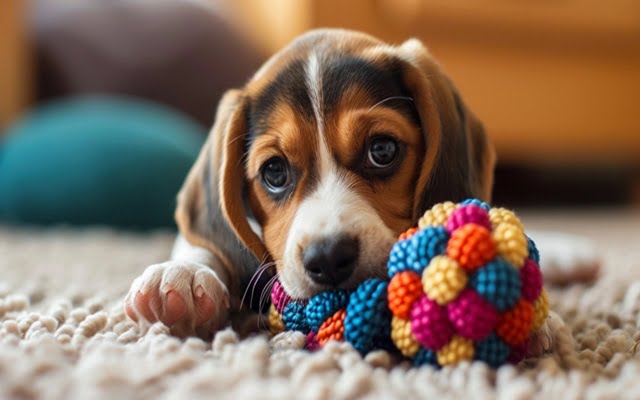
Mastering Basic Obedience for a Well-Mannered Beagle
Start with Core Commands
These essential commands form the foundation for a well-behaved Beagle:
- Sit:Start with your Beagle standing in front of you. Hold a treat at their nose level, then slowly lure the treat upwards. Their bottom will naturally drop into a sit. Say “sit” and reward!
- Stay: Once your Beagle knows “sit,” have them stay in position. Gradually increase distance and duration. Remember to reward for success!
- Come: Start with short distances. Use an excited voice and open arms to encourage your Beagle. Reward with praise, treats, and a fuss when they come!
- Down: Start with your Beagle in a sit. Hold a treat in front of their nose and lure them down towards the floor between their front paws. Say “down” as they go and reward.
- Leave It: This command is a Beagle lifesaver! Hold a treat in your fist. When your Beagle tries to get it, firmly say “leave it”. When they turn their attention away, reward them.
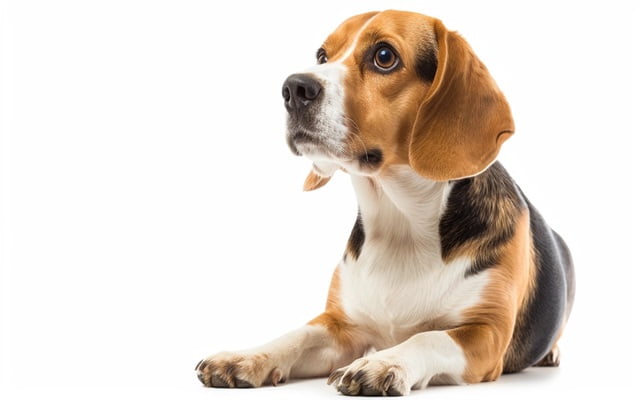
Leash Training
Picture this: a relaxing walk without your arm being pulled out of its socket. It’s possible! Here’s how:
- The Right Gear:A harness that doesn’t put pressure on the neck can be helpful for scent-obsessed Beagles.
- Reward Calm Walking:When your Beagle walks beside you with a loose leash, mark the behavior with “yes” and give them a treat.
- Stop and Go:As soon as they pull, stop walking. Only move forward again when there’s slack in the leash.
Addressing Beagle-Specific Challenges
- Distraction Control:Practice commands in busier environments once your Beagle grasps the basics. Start with short sessions, gradually increasing distractions.
- “Ears Turn Off” Moments:When a fascinating scent strikes, don’t compete! Stay patient, encourage them to check in with you, and heavily reward when they focus.
- Prey Drive:Use caution around smaller animals. Train a rock-solid “leave it” and recall on walks.
Impulse Control
Beagles can be impulsive little creatures! Teach them to wait patiently with these exercises:
- “Leave It” Expansion:Practice leaving food, toys, and other tempting items alone.
- Wait at Thresholds:Have your Beagle “wait” before going through doorways, preventing door-dashing.
- Mealtime Manners:Make your Beagle “sit” and “wait” before meals.
Consistency is King
Special but frequent dog training sessions are ideal for Beagles. Be consistent with commands and rewards, and don’t forget to practice in different environments!
Beyond the Basics: Enrichment and Advanced Training for a Happy Beagle
Mental Stimulation
A tired Beagle is a happy Beagle, and that goes for their brains too! Provide plenty of mental challenges with:
- Scent Work Games:Hide treats or a favorite toy around the house or yard and let your Beagle sniff them out. You can even try designing a scent obstacle course!
- Interactive Feeders: Ditch the bowl! Puzzle feeders and food dispensing toys make mealtime a stimulating workout for their brains.
- Training Games: Incorporate training into playtime. Play “find it” with treats, practice hide and seek, or play fetch with a twist where they bring a specific toy.
Problem Behaviors
Beagles are prone to a few common behavioral issues. Here’s how to address them proactively:
- Resource Guarding: Teach your Beagle to “trade” by offering high-value treats for items they’re possessive over. Avoid taking things away without an exchange.
- Separation Anxiety: Start with short absences and build up gradually. Leave your Beagle with puzzle toys and practice calm departures/arrivals.
- Barking:Ignore excessive barking for attention. Reward periods of quiet. If barking is triggered by something specific, work on desensitization training.
Fun Tricks and Activities
Show off your Beagle’s smarts with some fun tricks:
- Shake a Paw: Hold a treat in your fist and wait for your Beagle to paw at it. Mark with “yes” and reward!
- Roll Over: Guide your Beagle with a treat from a lying down position, luring them in a circle.
- Play Dead: A fun and dramatic trick! Start with “down,” then gradually lure them onto their side.
- Beyond Tricks: Consider whether your energetic Beagle would enjoy agility classes or scent work competitions!

Expert Tips and Insights for a Fulfilling Partnership
Building a Bond
The heart of training is a strong bond with your Beagle. Spend quality time playing, cuddling, and simply enjoying their company. This creates trust and boosts their willingness to learn.
Finding a Qualified Trainer
Sometimes, a professional boost makes all the difference. Look for a qualified dog trainer who:
- Uses positive reinforcement: Avoid trainers who focus on punishment or dominance-based methods.
- Has experience with Beagles: Understanding the breed’s unique personality is crucial.
- Emphasizes building a relationship: Training shouldn’t just be about obedience, but about strengthening your bond.
The Joy of a Well-trained Beagle
All your hard work pays off! A well-trained Beagle is a delightful companion. You’ll enjoy:
- Stress-free walks: Imagine actually enjoying walks without the constant pulling!
- Freedom and trust: A well-trained Beagle can enjoy more off-leash adventures in safe spaces.
- A Deeper connection: Training strengthens your communication and understanding.
- Happy Beagle, Happy You: A fulfilling life for your dog means a fulfilling life for you too!
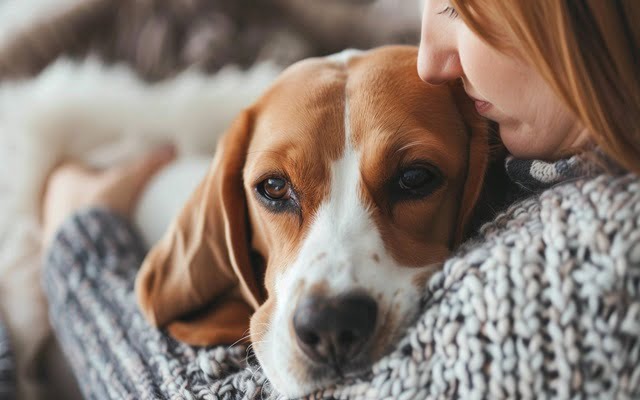
FAQ
My Beagle won’t focus on walks. How do I fix this?
- Teach a strong “look at me” cue with high-value treats.
- Start practicing in low-distraction areas and gradually increase the challenge.
- Heavily reward any time they check in with you on a walk, even briefly.
Can I let my Beagle off-leash safely?
- Only if you’re 100% confident in their recall, especially around distractions.
- Start in a securely fenced area. If their recall needs work, use a long-line in open spaces.
- Consider their prey drive – off-leash might be risky if they love to chase.
My Beagle is bored. What can I do?
- Get their nose working! Design scent games, hide treats, or scatter food in the garden.
- Teach them fun tricks – “spin”, “play dead”, or weave through your legs.
- Consider dog sports like agility or nose work classes for a mental and physical challenge.
My Beagle is scared of new things. How can I help?
- Pair new experiences with their absolute favorite treats and lots of praise.
- Keep initial encounters brief and choose calmer environments to start.
- Pay attention to their body language. If they’re stressed, back off and try again later.

My job is to make sure every fact is right and every article is a joy to read. I’m kind of like a dog trainer for information – I make it behave!

